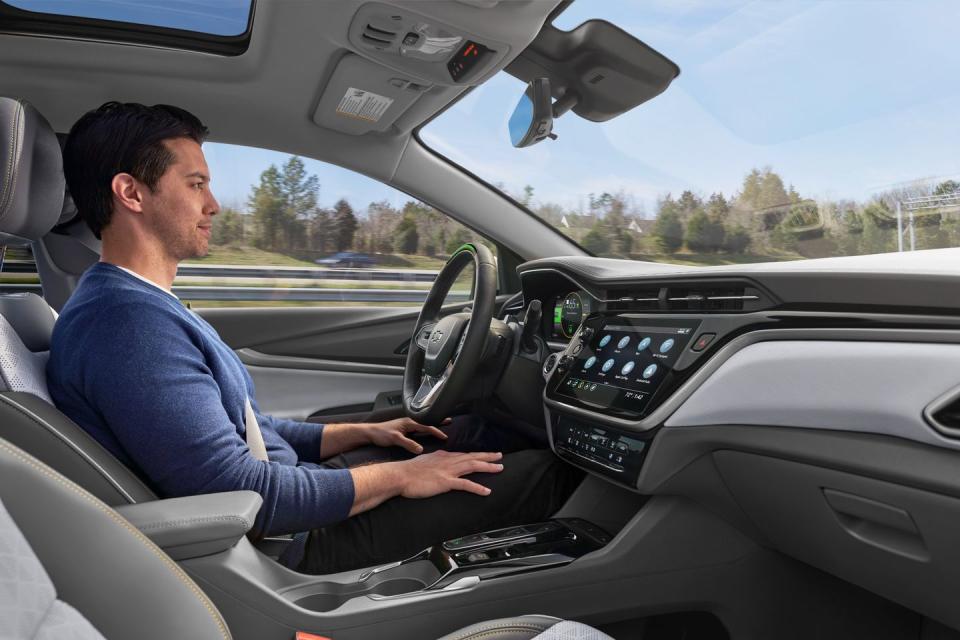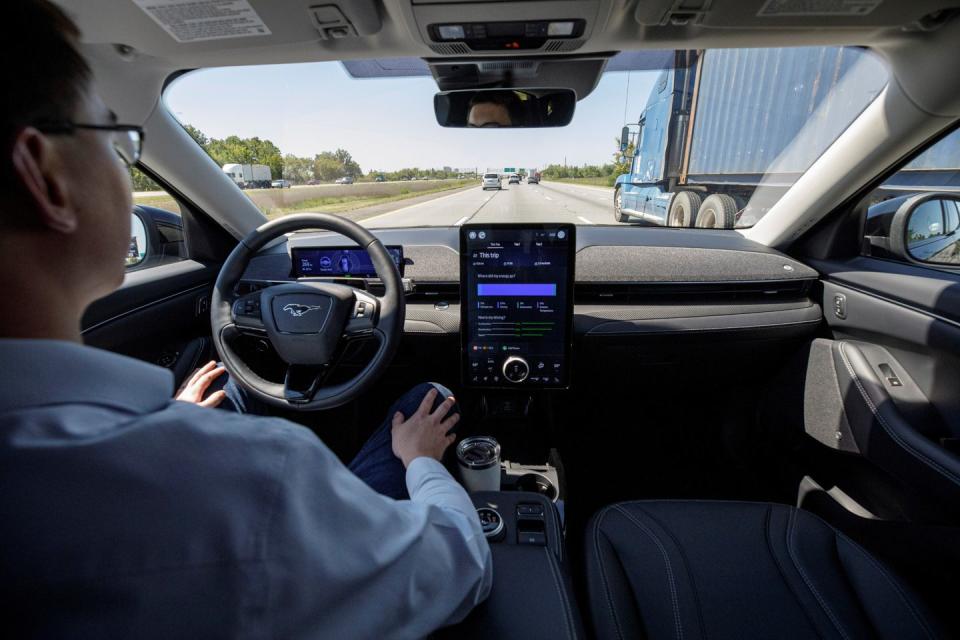Super Cruise Updates, Ford Blue Cruise Follows.

Autonomy is on the minds of Detroit manufacturers, with GM and Ford making major updates to Super Cruise and BlueCruise, respectively.
GM doubles its Super Cruise-available roads to around 400,000 miles of interstates and undivided highways, including difficult mountain passes like CO-82 to Aspen.
Ford retains its 130,000 miles of usable roads while adding features like cornering speed adjustment and autonomous lane change ability.
General Motors announced a 200,000-mile expansion of its Super Cruise network, over which the hands-free driving system will be able to run using its combination of LiDAR map data, computers, and radar. As opposed to Tesla’s Autopilot or its Full Self-Driving functions, Super Cruise was implemented with a very specific set of driving tasks in mind—interstate driving. Previously, the system focused on 200,000 miles of specifically divided highways that connected geographic regions, metropolitan areas, and the country as a whole. Now, with 400,000 miles of mapped and tested roads available, Super Cruise users can drive hands-free on certain undivided state highways and additional divided federal routes.
Of course, GM can't be the only manufacturer from the Big Three to implement semi-autonomous technology. Ford’s BlueCruise system is a direct competitor to GM's Super Cruise, though the systems use slightly different technology. Notably, there is a lack of LiDAR on the Ford models. Specific differences aside, just a month after Super Cruise updated its system, Ford followed with an updated BlueCruise 1.2 system last week. While no additional roads were added to the BlueCruise maps, it did add a host of new driving safety technologies including in-lane repositioning and predicative speed assist.

The main functions of Super Cruise and BlueCruise are autonomous acceleration or braking in order to maintain a selected following gap from a vehicle ahead. The systems can also maintain lane position and can perform both driver and system-initiated lane changes to pass slower traffic and to move from a lane that may be ending. It does all this while monitoring the driver’s head position and/or eyes in relation to the road to help ensure driver attention. Both systems are considered Level 2 of autonomy by the SAE autonomy scale.
Specifically, GM announced historically significant roadways like Route 66 and enthusiast havens like the Pacific Coast Highway and US Route 1 are now available. Canadian customers will be excited to hear that the Trans-Canada Highway is now an available route. However, these roads aren’t the only exciting additions to the Super Cruise technology.

Additional routes through Colorado and the Rocky Mountains will also become available to Super Cruise users. Interstate 70 through Colorado and Utah was already Super Cruise approved, but a GM spokesperson confirmed that routes like Independence Pass to Aspen and US-50 through Gunnison and Montrose, Colorado, will be available shortly. These routes are significantly narrower than I-70 and can be especially challenging during inclement weather, signaling that GM has a certain degree of confidence in its revised Super Cruise system.
A westward expansion of the Super Cruise network makes sense for GM. Glance at the former Super Cruise map and you’ll see a spider web of connections throughout the Midwest, South, and Eastern seaboard. Looking west of the Mississippi River, Super Cruise users found large swaths of unusable routes beyond the requisite interstates.

On the other hand, Ford chose to update the drive characteristics of its system. The update comes with three main upgrades: Lane Change Assist, Predictive Speed Assist, and In-Lane repositioning. Similar to the sharp curve technology found on GM’s system, Ford’s predictive speed assist uses uploaded maps and radar technology to slow before upcoming sharp curves while alerting the driver to the corner and speed change. Getting in line with GM, Ford also added automatic lane changes and a more sophisticated lane position feature to the updated BlueCruise, a change that Ford claims will give the autonomous technology a more human-like feel.
For now, BlueCruise is available on 130,000 miles of divided highways in the US. Ford says that over 16 million miles of hands-free driving have taken place since the rollout earlier this year. Previously offered on the Ford Mustang Mach-E and F-150 Lightning, the Lincoln Corsair will soon be equipped with the Lincoln-branded ActiveGlide 1.2 system for the 2023 model year. Other Ford and Lincoln models with BlueCruise capability include the Expedition and Navigator.

All around, the systems set out to achieve the same goal, though some obvious distinctions in accessibility and range are present. With an extensive update, GM has more than doubled the range offered by Ford's system, while BlueCruise is just now getting the ability to self-regulate lane changes. The use of LiDAR in the Super Cruise system adds a third and welcomed layer of safety in its autonomous capabilities, though Ford’s system maintains an air of legitimacy by using both radar and cameras.
Ultimately, both systems compete with each other more than they do with Tesla’s autonomous features. As Super Cruise and BlueCruise develop at a tempered rate and face the restrictions of both internal caution and industry-wide regulation, the parallels with Tesla’s more reckless Full Self Driving grow further apart. As such, the rollout of additional roads and improved safe driving capability will likely make or break the technological comparison between the two systems.
Have thoughts on autonomous driving and the progress automakers are making to achieve it? Share them in the comments below.

 Yahoo Autos
Yahoo Autos 